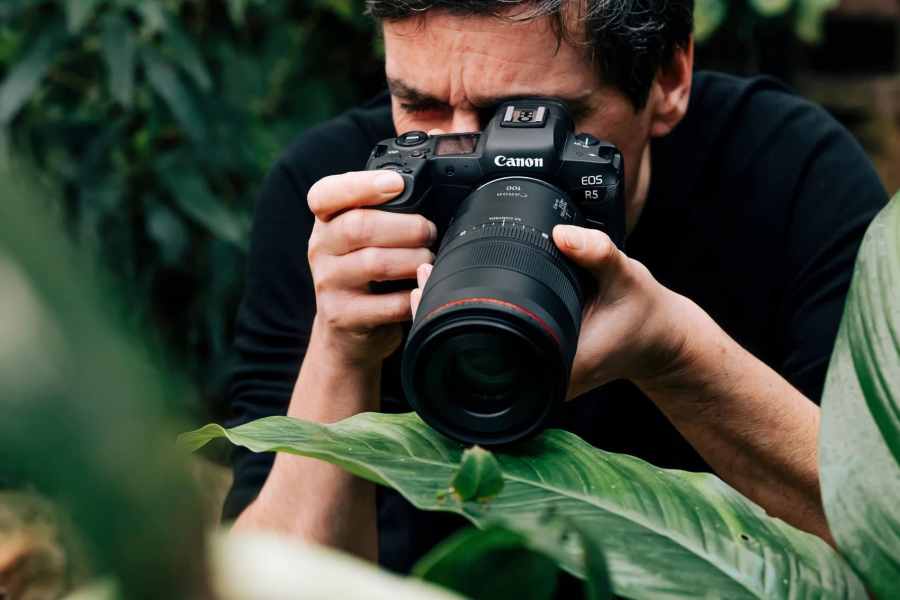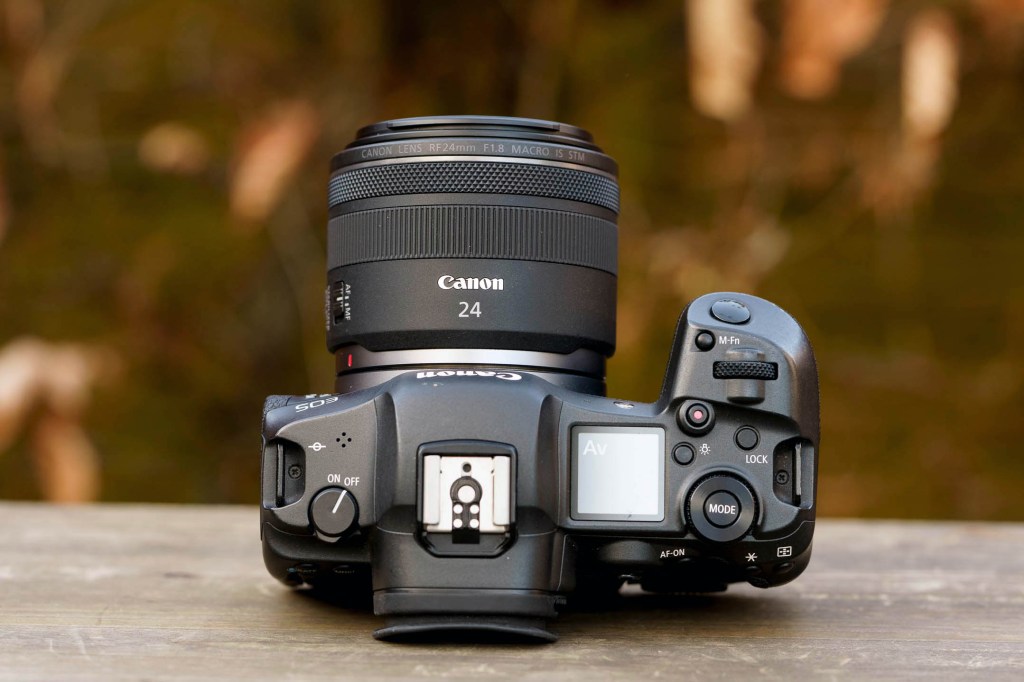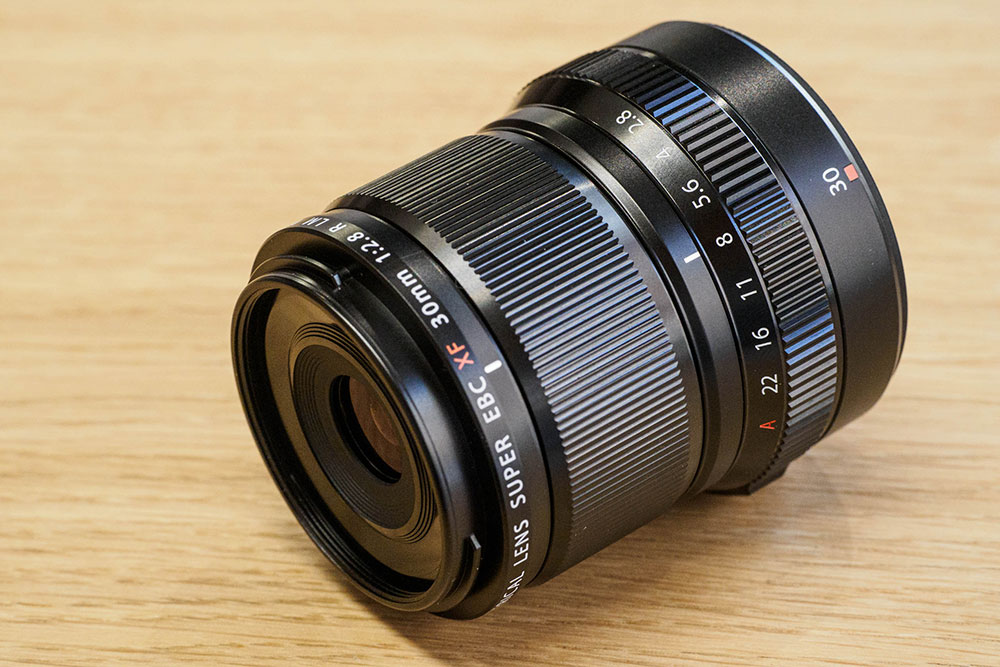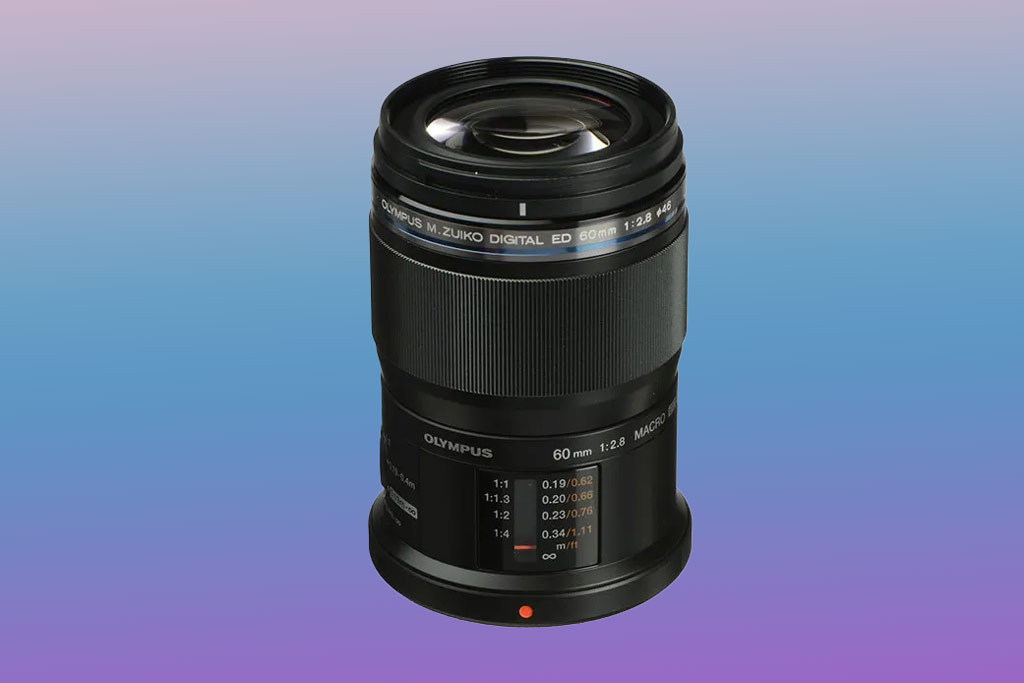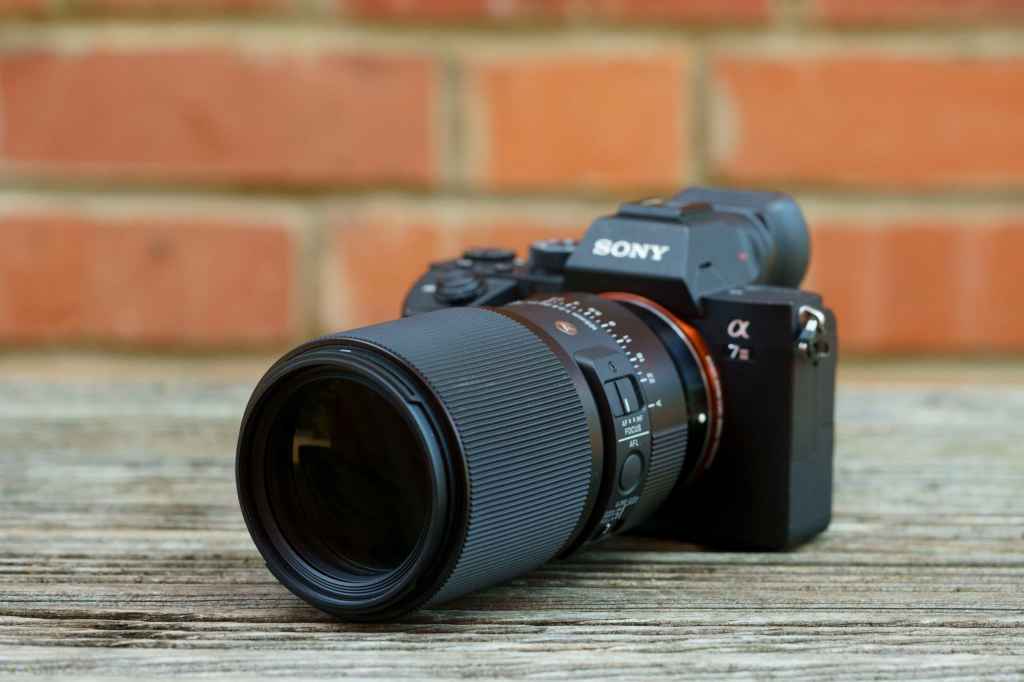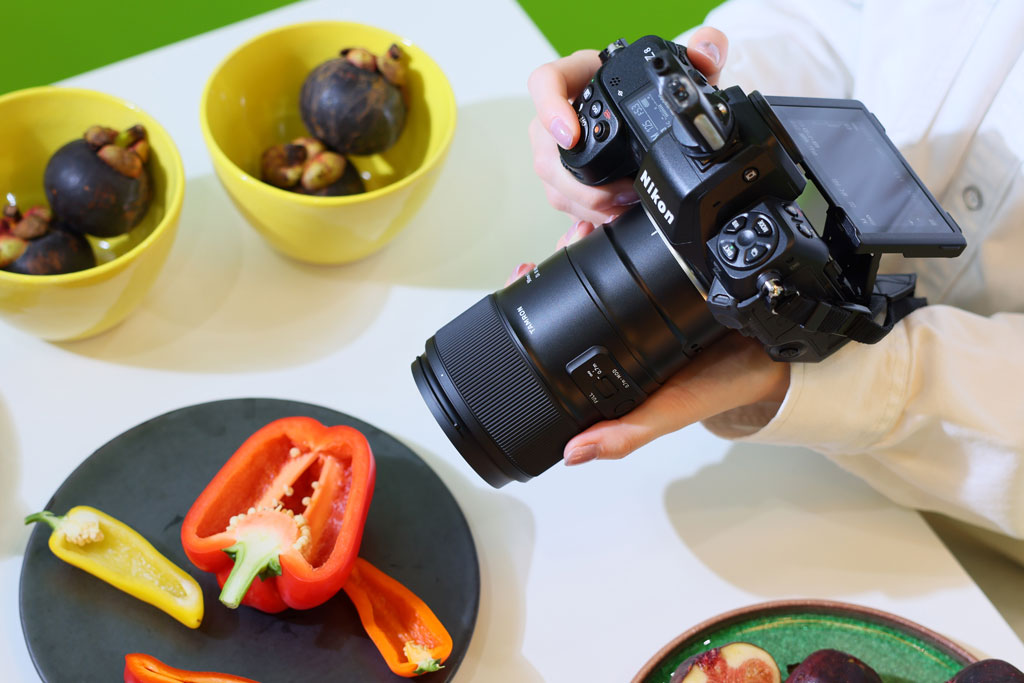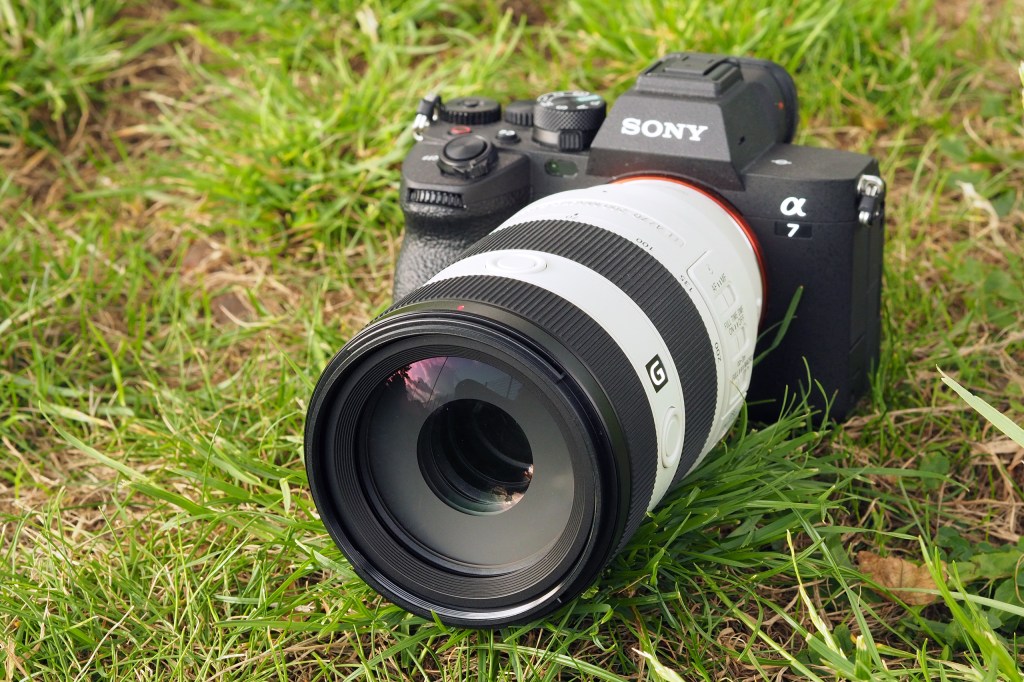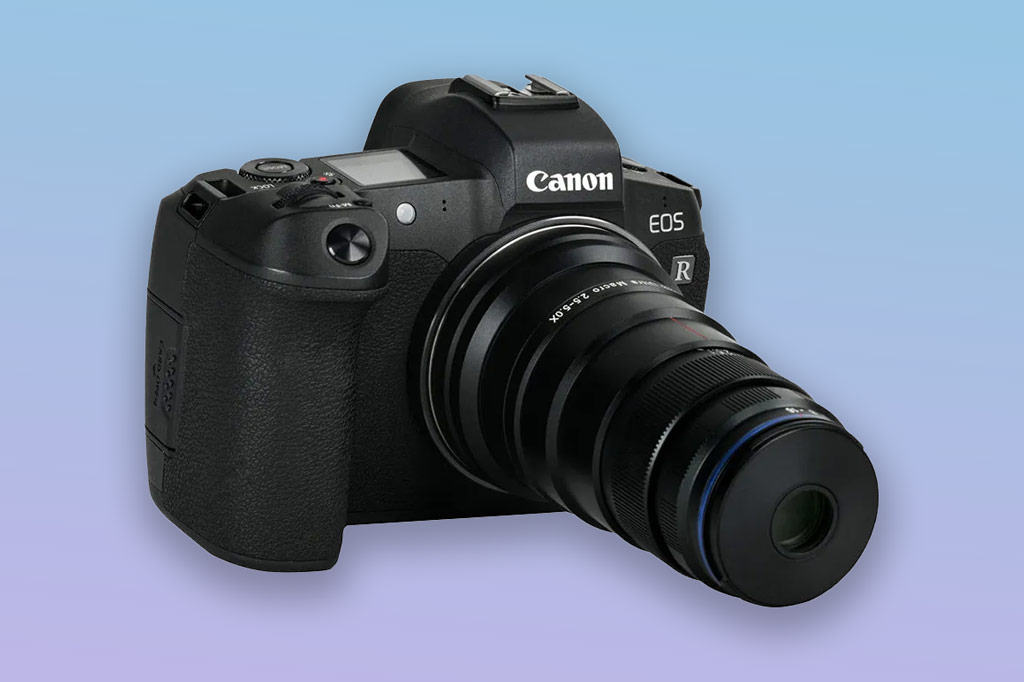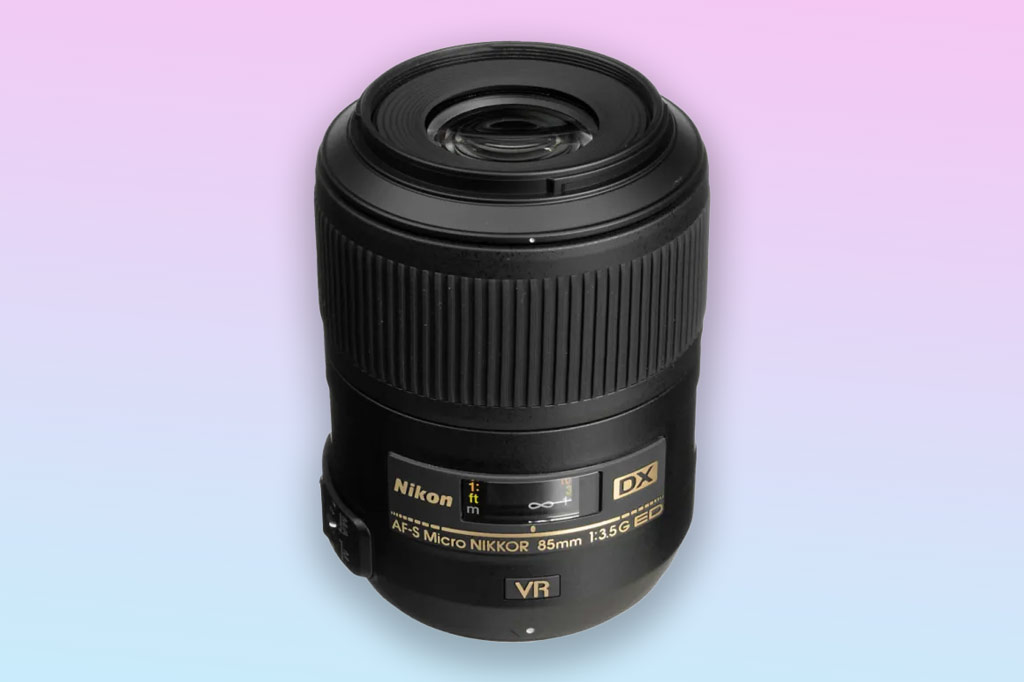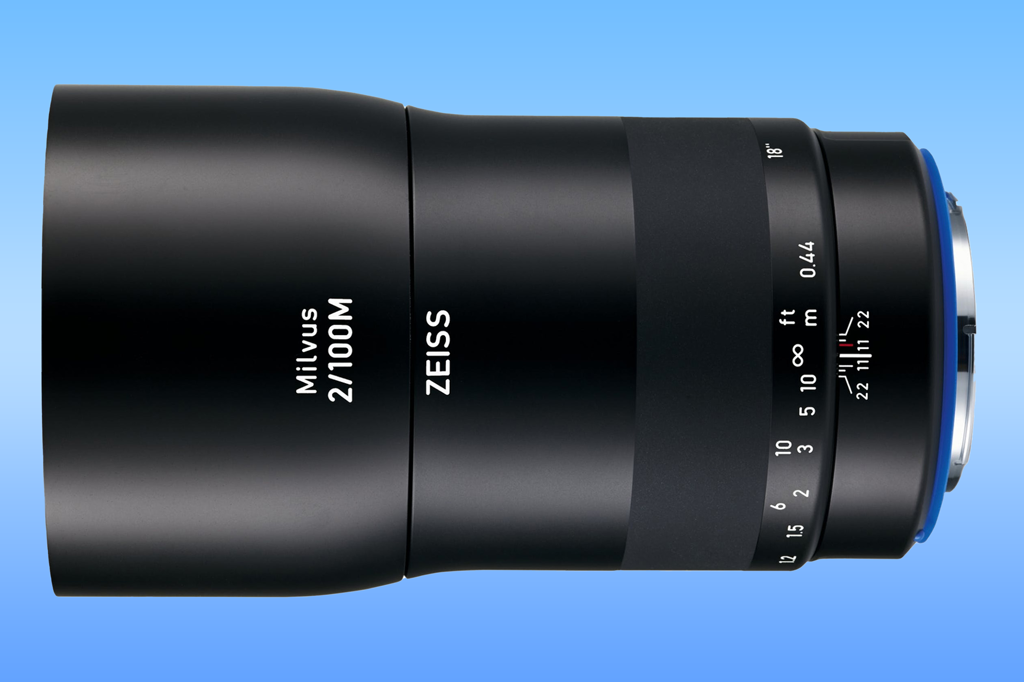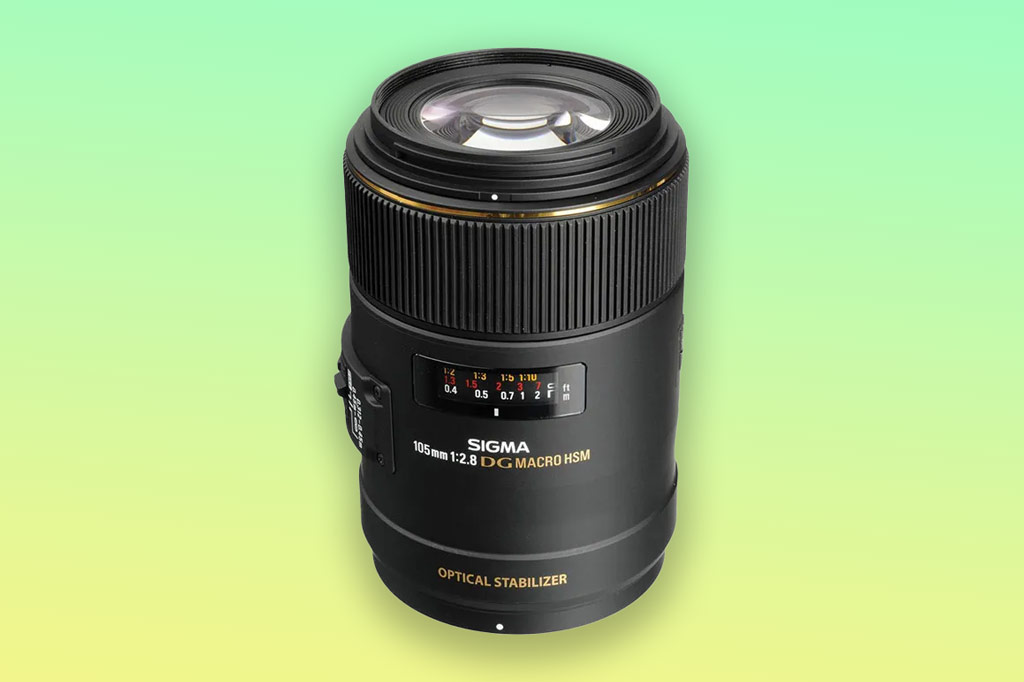In macro photography, the lens arguably counts for more than the camera – any camera can shoot close-ups, while many lenses can’t. Here, we’ve listed some for all the major mounts and systems, in both DSLRs and mirrorless cameras – as you’d expect, these form a long list!
The ability to focus in close and magnify subjects to fill the frame will allow you to render even tiny subjects like insects in full, glorious detail; hence this guide to help you find the right lens to shoot macro, and improve your macro photography. Start by acquiring the best macro lens you can afford.
Macro is quite a technical discipline, but don’t let this deter you. The barrier to entry isn’t as high as you might think – and neither is price. Yes, there are some expensive macro lenses out there, but decent affordable options also exist. We have a separate guide to the best-value macro lenses which identifies excellent affordable optics.
Below, you’ll see top recommendations for each major lens mount for quick reference. At the bottom of the page are tips on how to choose a good macro lens, with explanations of some key terms.
Best macro lenses: our quick list
Mirrorless macro lenses:
- Best Canon RF macro lens: Canon RF 85mm F2 Macro IS STM – Buy now
- Best Canon RF macro lens: Canon RF 100mm F2.8L Macro IS USM – Buy now
- Best bright Canon close-up lens: Canon RF 24mm F1.8 Macro IS STM – Buy now
- Best small Fujifilm X macro lens: Fujifilm XF 30mm F2.8 R LM WR – Buy now
- Best Fujifilm X macro lens: Fujifilm XF 80mm F2.8 R LM OIS WR Macro – Buy now
- Best Laowa macro lens: Laowa 65mm f/2.8 2x Ultra Macro – Buy now
- Best Laowa Macro lens: Laowa 85mm F2.6 2x Ultra Macro APO – Buy now
- Best small Nikon Z macro lens: Nikon Z MC 50mm f/2.8 – Buy now
- Best Nikon Z macro lens: Nikon Z MC 105mm f/2.8 S VR – Buy now
- Best bright MFT macro lens: Olympus M.Zuiko Digital ED 60mm f/2.8 Macro – Buy now
- Best Micro Four Thirds macro lens: OM System M.Zuiko ED 90mm F3.5 Macro IS PRO – Buy now
- Best Panasonic macro lens: Panasonic Leica DG 45mm Macro Lens – Buy now
- Best L-mount macro lens: Panasonic Lumix S 100mm F2.8 Macro – Buy now
- Best budget third-party 2x macro lens: Pergear 100mm F2.8 2x Macro – Buy now
- Best third-party macro lens (Sony E / L-mount): Sigma 105mm F2.8 DG DN Macro Art – Buy now
- Best Sony macro lens: Sony FE 90mm f2.8 macro G OSS – Buy now
- Tamron 90mm F2.8 Di III Macro VXD – Buy now
- Best Sony FE close-up lens: Sony FE 70-200mm F4 Macro G OSS II – Buy now
Best macro lenses for DSLRs:
- Best Canon EF macro lens: Canon EF 100mm f/2.8L Macro IS USM – Buy now
- Laowa 100mm f/2.8 2x Ultra Macro APO – Buy now
- Laowa 25mm f/2.8 2.5x – 5x Ultra Macro – Buy now
- Nikon AF-S DX Micro 85mm f/3.5G ED VR – Buy now
- Best Pentax K macro lens: Pentax FA 100mm f/2.8 WR Macro
- Zeiss Milvus 100mm f/2 Makro Planar – Buy now
- Irix 150mm f/2.8 Macro 1:1 Dragonfly Lens for Canon– Buy now
- Best third-party DSLR macro lens (Canon EF / Nikon F): Sigma 105mm f/2.8 EX DG Macro OS HSM – Buy now
Looking for the best deal on macro lenses? Here are our quick picks of macro lenses for each major mount our ‘Buy now’ buttons set up to automatically take you to the best prices from trusted retailers. You’ll also find a list of other retailers below each lens, so you can find the right deal for you.
Why you can trust Amateur Photographer…
We spend many hours testing every product we recommend, in detail, in a variety of situations and shooting scenarios, and only use experts for our reviews, so you can be sure that you’re getting the best products. Find out more about our expert writers.
Best macro lenses for mirrorless cameras
First up, we cover the best macro lenses you can buy for mirrorless systems. We’ve included brilliant close-up options for Canon (RF and EF-M), Nikon Z, Fujifilm X, Leica L, Sony E and Micro Four Thirds. That’s a lot to get through, so let’s get started!
Best Canon RF macro lens: Canon RF 85mm F2 Macro IS STM
Amateur Photographer verdict
With half-size magnification technically this is not a true macro lens, but it handles close up subjects exceptionally well also at a very reasonable price point- Great value for money
- Effective stabilisation system
- Wide f/2 aperture
- Not “true” macro
| Mount | Canon RF |
| Min. focus distance | 35cm |
| Max. magnification | 0.5x |
Canon EOS R system owners have an unusually large number of lenses labelled ‘Macro’ to choose from, with prices ranging from the £529 RF 35mm F1.8 Macro IS STM to the £1479 RF 100mm F2.8 L Macro IS USM. However, we suspect the latter’s high price will push many users towards its 85mm f/2 stablemate. This isn’t what many photographers consider a ‘true’ macro lens, offering only half life-size magnification at its 35cm minimum focus distance. Indeed it could equally be considered to be an affordable portrait lens that’s unusually good at close-up shooting. But it offers five stops of optical stabilisation on cameras that lack in-body stabilisation, and up to eight stops on those with IBIS.
Best Canon RF macro lens: Canon RF 100mm F2.8L Macro IS USM
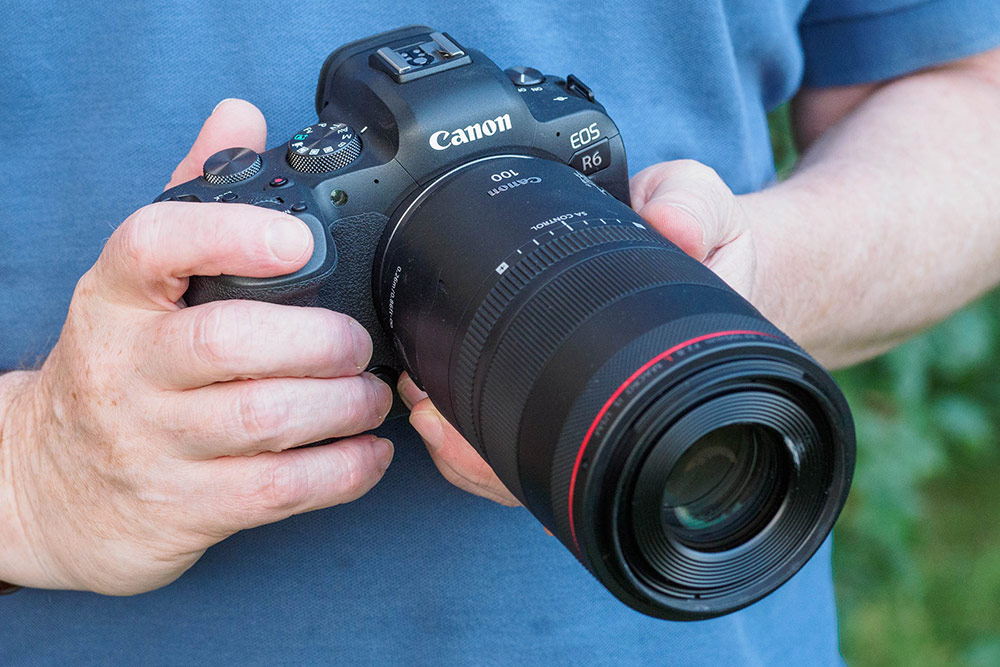
Amateur Photographer verdict
A sensational optic for macro, but it also doubles up as a portrait lens, so you get even more for your money- Very good magnification
- Near-faultless image quality
- Autofocus works beautifully with EOS R cameras
- Huge
- Very expensive
| Mount | Canon RF-mount |
| Min. focus distance | 26cm |
| Max. magnification | 1.4x |
You could be forgiven for thinking that there’s nothing special about Canon’s pro-spec macro lens for full-frame mirrorless, given that it’s named almost identically to its DSLR predecessor. However, Canon has added some exciting extra features. Firstly, it offers 1.4x magnification, which means you can photograph a subject measuring just 24mm x 16mm. Secondly an ‘SA Control’ ring allows users to adjust background blur either in front of, or behind the subject. In addition you get all the hallmarks of Canon’s L range, including robust build quality, rapid autofocus, highly effective optical stabilisation and needless to say, superb optics.
Read our Canon RF 100mm F2.8L Macro IS USM review
Best bright Canon close-up lens: Canon RF 24mm F1.8 Macro IS STM
Amateur Photographer verdict
Although not. a true-macro lens its close focusing distance makes it a versatile, compact walk-around prime that handles close-ups well. It’s sharp, quiet, and enjoyable to use.- Excellent focusing wheel
- Good all-purpose prime
- Image quality generally good
- Not true 1:1
- No weather sealing
| Mount | Canon RF |
| Min. focus distance | 14cm |
| Max. magnification | 0.5x |
While this wide-angle prime isn’t a ‘true’ macro lens, with a magnification ratio 1:2 (rendering subjects on the sensor at half of life-size), it’s still a great walk-around lens with a solid line in close-ups. It focuses in much closer than your average 24mm prime, with a short distance of just 14cm. The well-placed slim manual focus control ring fits perfectly in the hand, and it can be adjusted even when the AF is engaged, for efficiency. Focusing is nice and quiet and image quality is excellent, particularly in the centre. This is a quite a short lens for macro, so keep in mind you may have to get very close to your subjects for striking, frame-filling images. Watch you don’t cast a shadow.
Read our Canon RF 24mm F1.8 Macro IS STM review.
Best Fujifilm XF macro lens: Fujifilm XF 30mm F2.8 R LM WR
Amateur Photographer verdict
A perfect walk around lens, with a useful focal range for landscapes, portraits as well as excellent macro shots and as an added bonus it barely weighs anything.- Small and lightweight (200g)
- Near-silent” AF and minimal focus breathing
- Attractive bokeh
- Weather resistant
- Not a stabilised lens
| Mount | Fujifilm X |
| Min. focus distance | 10cm |
| Max. magnification | 1.0x |
With its focal length equivalent to 45mm, this lens not only offers life-size magnification, but can also double up as an everyday standard lens. You get Fujifilm’s familiar goodies, including an aperture ring and weather-resistant construction, in a design that’s less than 7cm long and weighs under 200g. It’s worth noting, though, that at minimum focus, the front of the lens ends up very close to the subject. If you’d prefer a longer focal length on a similar budget there’s also the £569 Fujifilm XF 60mm F2.4 R Macro, but it’s an old and relatively unrefined design that only offers 0.5x magnification.
Read our full Fujifilm XF 30mm F2.8 R LM WR Macro review
Best Fujifilm X macro lens: Fujifilm XF 80mm F2.8 R LM OIS WR Macro
Amateur Photographer verdict
With a 120mm equivalent focal length it is ideal for skittish macro subject like insects, and you can further extends its range thanks to its compatibility with Fujifilm teleconverters- Life-size 1:1 reproduction
- Built-in optical stabilisation
- Quiet autofocus performance
- Expensive when purchased new
| Mount | Fujifilm X |
| Min. focus distance | 25cm |
| Max. magnification | 1.0x |
X-system users interested in close-up photography are well served by this fully featured, if pricey, macro lens. Its slightly longer-than-usual 120mm equivalent view allows a good working distance, with life-size reproduction offered at the 25cm minimum focus. The lens employs linear motors for quiet autofocus and has a distance limiter switch to reduce hunting. Optical stabilisation is built in, promising up to five stops of shake reduction, and weather resistant construction allows you to keep shooting in less-than-perfect conditions. As the icing on the cake, the lens works with Fujifilm’s 1.4x and 2.0x teleconverters.
Laowa 65mm f/2.8 2x Ultra Macro

Amateur Photographer verdict
It offers higher magnification than the camera makers’ autofocus alternatives for a lower price, while delivering beautiful images that combine stunning sharpness with lovely bokeh- Powerful magnification factor
- Delivers the goods in image quality
- Robust but light
- Fully manual (no electronic communication with camera)
- Not weather sealed
| Mounts | Fujifilm, Sony E (APS-C) |
| Min. focus distance | 17cm |
| Max. magnification | 2.0x |
Just at the moment, Laowa is the most innovative lens maker in close-up photography. This 65mm f/2.8 optic offers twice life-size magnification (effectively 3x in full-frame terms) for users of APS-C mirrorless cameras and at a very tempting price. Its robust metal barrel is impressively compact at 100mm long and 335g in weight, and both focusing and aperture controls are fully manual. Crucially, it offers excellent image quality, combining excellent sharpness and beautiful background blur. It’s available in Fujifilm X and Sony E mounts, while Micro Four Thirds users get a scaled-down version, the Laowa 50mm f/2.8 2x Ultra Macro APO, which costs $399 / £429.
Read our full Laowa 65mm f/2.8 2x Ultra Macro review
Best Laowa Macro lens: Laowa 85mm F5.6 2x Ultra Macro APO

Amateur Photographer verdict
If you enjoy shooting close-ups but never seem to have space to fit a macro lens in your bag, it might just what you need.- Lots of mount options
- Exceptional magnification power
- Compact and lightweight
- Highly specialised to macro
- Only f/5.6 maximum aperture
| Mounts | Canon RF, Nikon Z, Leica M, Sony E and L-mount |
| Min. focus distance | 15.3cm |
| Max. magnification | 2.0x |
This unique lens is remarkably small for a full-frame macro, at just 53mm in diameter, 78mm in length, and 291g. It achieves this thanks to its modest maximum aperture and relatively short focal length. Remarkably, though, it’s still capable of twice life-size magnification, meaning it can focus on an area measuring just 18mm x 12mm. Even then, you get a fairly comfortable working distance of 6cm from the front of the lens to the subject. It delivers impressive image quality too, especially when stopped down to f/8 or f/11. It’s available in Canon RF, Nikon Z, Sony E, and L mounts.
Read our Laowa 85mm f/5.6 2x Ultra Macro APO review
Best standard Nikon Z macro lens: Nikon Z MC 50mm f/2.8

Amateur Photographer verdict
It delivers superb optical quality and has a relatively compact size and light weight, making it a great carry around lens for smaller Z mirrorless bodies- Amazing sharpness and overall quality
- Well balanced on smaller Z cameras
- No stabilisation
- No weather sealing
| Mount | Nikon Z |
| Min. focus distance | 16cm |
| Max. magnification | 1.0x |
Nikon offers two macro lenses for its Z system mirrorless cameras, with the 50mm f/2.8 being the more affordable. Unlike its 105mm sibling, this lens lacks either weather sealing or optical stabilisation, which might make it look like the less desirable choice. But it makes up for this with its optical quality, which quite simply is superb. Its relatively compact size and light weight also make it a good match for Nikon’s smaller Z-series camera bodies, including APS-C format cameras like the Nikon Z fc and Nikon Z50II.
Best Nikon Z macro lens: Nikon Z MC 105mm f/2.8 S VR
Amateur Photographer verdict
A versatile lens with impressive sharpness across the frame. The dedicated aperture control ring is useful not just for macro subjects but for shooting portraits too.- Tough and weather sealed
- Big focus ring with manual override
- Top-notch quality
- Image stabilisation
- Cheaper options available
- Some diffraction at narrow apertures
| Mount | Nikon Z |
| Min. focus distance | 29cm |
| Max. magnification | 1.0x |
As the more pro-focused of Nikon’s pair of Z-system macro lenses, this packs in pretty much every feature you could wish for. It’s optically stabilised, weather-sealed, and employs an internal-focus design. This means that it focuses quickly and silently and its length stays constant. Along with a large manual focus ring, there’s a control dial on the barrel for changing exposure settings, whose function can be customised from the camera body. A small display panel on top can show the focus distance and depth of field. It almost goes without saying that the lens is also supremely sharp, even at f/2.8.
Read our full Nikon Z MC 105mm f/2.8 S VR review
Best Bright MFT macro lens: Olympus M.Zuiko Digital ED 60mm f/2.8 Macro
Amateur Photographer verdict
It delivers true 1:1 macro magnification with excellent image quality and fast, silent autofocus, it represents exceptional value for macro enthusiasts who use the MFT system- Very small and light
- “True” macro magnification
- Focus limiter switch
- Great value
- At this price, not much to complain about!
| Mount | Micro Four Thirds |
| Min. focus distance | 19cm |
| Max. magnification | 1.0x |
This brilliant little lens is one of the jewels of the Micro Four Thirds system. Its dust- and splash-proof barrel is extremely small and light, at 82mm long and just 186g in weight, while its slimline 56mm diameter minimises the risk of shadowing your subject. Yet it still finds space for both a focus distance indicator and a focus limiter switch that has a dedicated 1:1 setting. Autofocus is fast and silent, and there’s absolutely nothing to complain about with regards to image quality. Set to its 19cm minimum focus distance, the image area of 17.4 x 13mm is equivalent to 2x magnification in 35mm terms.
For more options, have a look at the best Micro Four Thirds lenses.
Best Micro Four Thirds macro lens: OM System M.Zuiko ED 90mm F3.5 Macro IS PRO
Amateur Photographer verdict
It is on the pricier side, but the 2x magnification, superb sharpness and stabilisation brings results that will make you fall in love with the macro genre even more- Excellent close focus
- Amazing magnification potential
- Can be pushed further with extenders
- Expensive
- Can be tricky to use at first
| Mount | Micro Four Thirds |
| Min. focus distance | 25cm (S-MACRO: 22.4cm) |
| Max. magnification | 2.0x |
This remarkable optic can stake a serious claim to being the most versatile macro lens available. In its standard focusing mode, it offers life-size magnification at 0.25m, but when you switch to its special S Macro mode, this increases to twice-life size at a distance of 0.224m. This is equivalent to 4x on full-frame, and in practice that means you can fill the frame with a subject as small as 9.7 x 6.5mm. What’s more, the lens is compatible with 1.4x and 2x teleconverters for even tighter close-ups. Built-in optical stabilisation is rated for 6 stops of shake suppression, and the barrel is weather sealed with an IP53 rating.
Read our OM System M.Zuiko ED 90mm F3.5 Macro IS PRO review
Best Panasonic Macro lens: Panasonic Leica DG Macro-Elmarit 45mm F2.8 OIS Asph

Amateur Photographer verdict
A high-quality macro lens with the bonus of optical stabilisation. Though pricier than some of its rivals, its smaller size and strong optical performance make it a solid choice for MFT users- “True” macro lens
- Just 63mm long
- Good sharpness across the board
- Pricier than similar Olympus lens
| Mount | Micro Four Thirds |
| Min. focus distance | 15cm |
| Max. magnification | 1.0x |
While the more affordable Olympus 60mm f/2.8 may look like the best choice of macro lens for Micro Four Thirds shooters, Panasonic’s Leica-badged 45mm f/2.8 has its own charms. Thanks to its shorter, 90mm equivalent focal length, it’s even smaller, at just 63mm in length. Yet it’s still capable of life-size reproduction. It also includes optical image stabilisation, which is particularly handy for those using older or smaller Lumix bodies that lack in-body stabilisation, although it’s of limited use at macro distances. Optically it delivers the goods though, with impressive sharpness used wide open and minimal aberrations.
Best L-mount macro lens: Panasonic Lumix S 100mm F2.8 Macro
Amateur Photographer verdict
A true-macro lens, with fast, precise autofocus and solid weather sealing. Its short working distance is the only real trade-off in an otherwise superb, travel-friendly optic- Extremely small and lightweight
- Useful 1:1 magnification
- Fast, quiet and precise autofocus
- Autofocus is entirely usable for macro shooting
| Mount | L-mount |
| Min. focus distance | 20.4cm |
| Max. magnification | 1.0x |
At first glance, you probably wouldn’t even think this was a macro lens, given its remarkably small size that matches Panasonic’s range of Lumix S f/1.8 primes. At just 8.2cm long and less than 300g, it’s about half the weight of similar full-frame macro lenses. Yet it’s still capable of life-size magnification, with the only apparent drawback being a slightly short working distance of about 10cm at 1:1. But in return, you get autofocus that’s unusually rapid for a macro lens, and entirely usable for close-up shooting. The lens also benefits from dust-and splashproof construction and should work in temperatures as low as -10°C.
Read our full reiew of the Panasonic Lumix S 100mm F2.8 Macro.
Best budget third-party 2x macro lens: Pergear 100mm F2.8 2x Macro
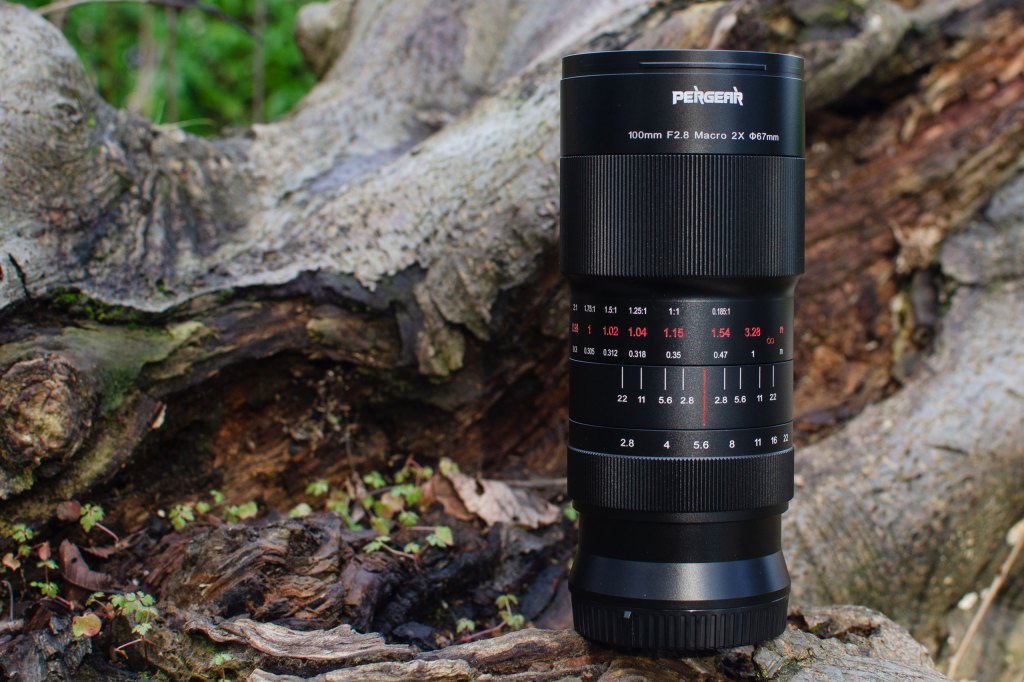
Amateur Photographer verdict
A complelling choice for extreme macro photography on a budget. Despite being fully manual, it delivers excellent image quality, solid build, and true 2:1 magnification- Solid all-metal build with premium feel
- Excellent value for money
- 2:1 magnification
- Fully manual operation may not suit all users
- Heavy and hard to shoot handheld
- No electronic communication or EXIF data
| Mount | Sony-E, Fuji-X, Canon RF, Nikon Z, Canon EF, Leica L |
| Min. focus distance | 30cm |
| Max. magnification | 2x |
This lens delivers extraordinary value for money. It’s a fraction of the price of the camera makers’ own macro lenses, yet provides 2:1 magnification, with an 11cm working distance from the subject. In part, this is down to its mechanical simplicity: both focusing and aperture operation are fully manual, with the latter employing a 13-blade diaphragm for attractive bokeh. There are no electronics onboard either, for communicating aperture or focal length to the camera. Optically, though, it performs extremely well, delivering beautiful image quality and overall good sharpness. It’s available direct from the firm’s website in Nikon Z, Canon RF, Sony E and L-mounts.
Read our full review of the Pergear 100mm F2.8 Macro.
Best third party macro lens: Sigma 105mm F2.8 DG DN Macro Art
Amateur Photographer verdict
A premium macro lens with a premium price tag. A stellar performer with exceptional sharpness, a tactile aperture ring, and weather sealing.- Nice big focus ring
- Exceptional image quality
- Aberrations well controlled
- Big old price hike
| Mount | Sony E and L-mount |
| Min. focus distance | 29.5 |
| Max. magnification | 1.0x |
Designed from the ground up for full-frame mirrorless cameras, this lens is available in Sony E and L mounts. In design terms, it employs a barrel that extends dramatically on focusing to its 29.5cm minimum focus position, rather than using an internal focus mechanism like most contemporary macro lenses. According to Sigma, this enables both high sharpness and effective suppression of colour fringing, which is borne out by the superb image quality in testing. But the flipside is relatively slow autofocus. There’s no optical image stabilisation onboard, but most of the cameras the lens will be used on feature in-body stabilisation anyway.
Read our Sigma 105mm F2.8 DG DN Macro Art lens review
Tamron 90mm F2.8 Di III Macro VXD
Amateur Photographer verdict
Strikes a good balance between performance and value, delivering excellent sharpness, while artfully blurring out of focus areas.- Focus Set button and Focus limiter switch
- Weather-sealed
- Good value
- No optical image stabilisation
- No aperture ring
| Mount | Sony-E, Nikon-Z |
| Min. focus distance | 23cm |
| Max. magnification | 1.0x |
Available in Sony E and Nikon Z mounts, Tamron’s first macro lens designed specifically for full-frame mirrorless cameras comes in at a remarkably tempting price. Yet despite this, it doesn’t skimp on features. Naturally you get 1:1 magnification, when the lens is set to its minimum focus distance of just 23cm. But Tamron says it’s equally suitable for shooting portraits as well as close-ups, thanks to its soft bokeh. Other desirable features include moisture resistant construction, plus a Focus Set button and Focus limiter switch on the side of the barrel. It’s also compatible with Tamron’s Lens Utility software for tweaking its operation, or future firmware updates.
Best Sony FE-mount close-up lens: Sony FE 70-200mm F4 Macro G OSS II
Amateur Photographer verdict
Image quality is of the highest, with sharp detail throughout the zoom range. Impressive macro ability make this lens yet more versatile. Compact, lightweight it gives more than most 70-200mm lenses.- Sublime image quality
- Fast, quiet, close focusing
- Relatively compact build
- Not ‘true’ macro
- Price hike over previous version
| Mount | Sony FE |
| Min. focusing distance | 26-42cm |
| Max. magnification | 0.5x |
This outstanding Sony telephoto earned five stars in our review. It has an impressive close focusing distance, dazzling image quality throughout its zoom range, and offers a significant cost saving compared to the f/2.8 zoom in the same focal range. It’s not quite a true macro lens, with a 0.5x magnification rather than the full 1.0x, but the results speak for themselves. In testing, we were able to take full advantage of the close-focusing to produce pin-sharp, highly detailed images of small moving subjects like little ducklings, and fill the frame with small still-life subjects. The lens produces lovely circular bokeh when used wide open, and optical distortions and aberrations are nowhere to be found thanks to Sony’s automatic camera corrections.
Read our full Sony FE 70-200mm F4 Macro G OSS II review
Best Sony macro lens: Sony FE 90mm F2.8 Macro G OSS
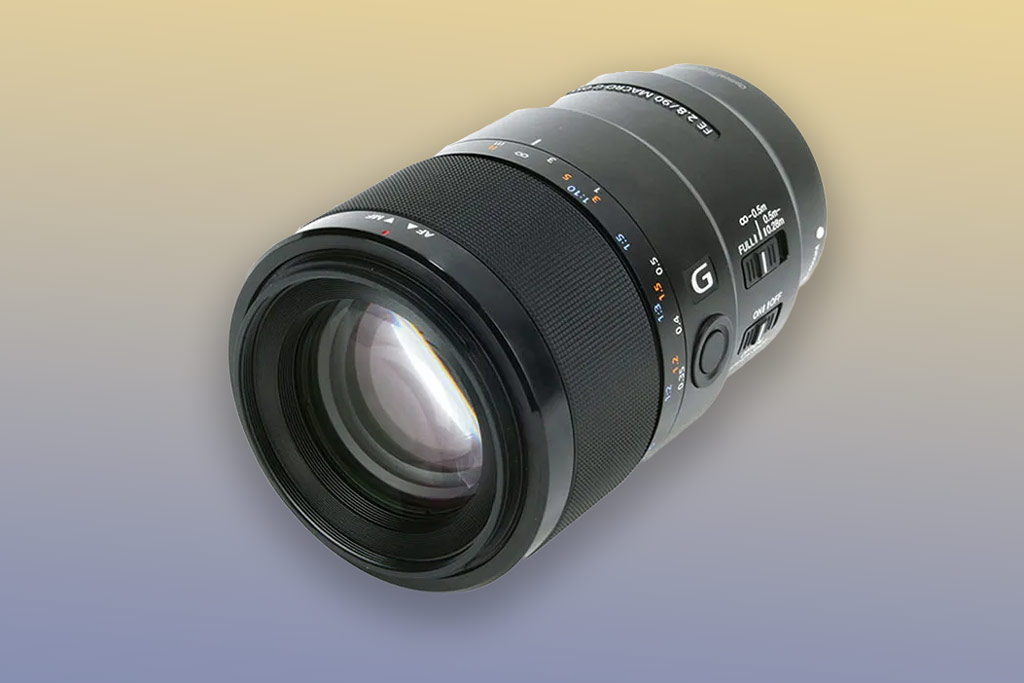
Amateur Photographer verdict
a top-tier macro lens for E-mount users, offering superb sharpness, internal focusing, and built-in stabilisation—though it comes at a higher price than Sigma’s strong alternative.- Great handling
- Internal focusing mechanism
- Top sharpness
- Pricier than Sigma alternatives
| Mount | Sony E |
| Min. focusinfg distance | 28cm |
| Max. magnification | 1.0x |
While this lens now has stiff competition from more affordable rivals from Tamron and Sigma, it’s still a truly excellent choice for users of Sony E mount cameras. It includes both optical stabilisation and internal focusing, in a dust and moisture resistant design. Other highlights include a focus ring that can be pulled back towards the camera to engage manual mode, a Focus Hold button, and a focus limiter switch on the side of the barrel. But unlike more recent Sony lenses, there’s no aperture ring. Optically it’s absolutely superb, giving super-sharp images with smooth, attractive bokeh.
Best macro lenses for DSLRs
With DSLR systems having been going strong for decades, they’ve built up an enviable catalogue of macro lenses for close-up shooting. Here are what we reckon are the best macro lenses you can buy for the three major DSLR mounts – Canon EF, Nikon F and Pentax K.
Best Canon EF macro lens: Canon EF 100mm f/2.8L Macro IS USM
Amateur Photographer verdict
While not cheap, it’s a top-tier choice for serious macro and portrait work for DSLR users. It offers superb sharpness, fast silent autofocus, and effective image stabilisation- Quick, silent, autofocus
- Solid construction
- Beautiful L-series sharpness
- On the expensive side
| Mount | Canon EF |
| Min. focus distance | 30cm |
| Max. magnification | 1.0x |
Canon’s third-generation 100mm macro for its full-frame DSLRs is an absolutely stellar optic, with all the attributes we’d expect from the firm’s professional L range. It delivers superb image quality, with exceptional sharpness, minimal chromatic aberration and essentially no distortion. A ring-type ultrasonic motor delivers rapid, silent autofocus, while life-size magnification is achieved at the minimum focus distance of 30cm. Optical stabilisation is built-in, with Canon’s hybrid system promising four stops stabilisation with distant subjects, dropping to two stops at half life-size magnification. The barrel boasts robust weather-sealed construction, and an optional tripod collar is also available.
Laowa 100mm f/2.8 2x Ultra Macro APO
Amateur Photographer verdict
Its apochromatic design delivers excellent optical performance with minimal fringing. A unique macro lens offering up to 2x magnification while still focusing to infinity- Apochromatic design
- Not too heavy
- Exceptional close focus
- No autofocus/electronic camera communication
| Mount | Canon EF, Nikon F, Pentax K, Canon RF, Nikon Z, Sony E, L |
| Min. focus distance | 24.7cm |
| Max. magnification | 2.0x |
Venus Optics produces a whole family of Ultra Macro lenses with a unique trick, in that they offer 2x magnification while still focusing to infinity. The 100mm f/2.8 is designed for full-frame DSLR cameras and available in Nikon F, Pentax K and Canon EF mounts, with the latter coming in two versions with a choice of manual or electronic aperture setting. The lens has also been adapted for full-frame mirrorless, in Canon RF, Nikon Z, Sony E and L-mount versions. The minimum focus distance is just 24.7cm, and colour fringing is suppressed thanks to the apochromatic design. Despite the enhanced close focus, the size and weight are similar to conventional 100mm macro lenses.
Laowa 25mm f/2.8 2.5x – 5x Ultra Macro
Amateur Photographer verdict
A specialist lens offering extraordinary 5x magnification for extreme close-up work. While it demands careful setup and manual operation, it delivers unmatched capabilities at a budget-friendly price- Incredible magnifying power
- Slim barrel
- Broad compatibility
- Requires a lot of setup to be at its best
- No electronic camera communication
| Mounts | Canon EF, Nikon F, Pentax K, Canon RF, Nikon Z, Sony E, L |
| Min. focus distance | 17.3cm |
| Max. magnification | 5.0x |
For serious devotees of close-up photography, this unusual lens provides ultra-high magnification at a remarkably low price. Unusually, it doesn’t focus to infinity, but instead provides between 2.5x and 5x magnification across a focus distance range of 17.3cm to 23.4cm. It requires both manual focus and aperture operation, and is generally best used on a tripod fitted with a macro rail. The slimline, tapered barrel is specially designed to minimise shadowing of your subject. The optics cover full-frame sensors, and the lens comes in Canon EF, Nikon F and Pentax K mount versions for DSLRs, along with Canon RF, Nikon Z, Sony E and L-mount mirrorless options.
Nikon AF-S DX 85mm f/3.5G ED VR Micro
Amateur Photographer verdict
Its long effective focal length and ability to stop down to f/32 make it great for detailed close-ups, though its price is relatively high for a DX-format lens.- Long equivalent focal length
- Can stop down to f/32
- Super-quiet autofocus
- Pricey for a DX lens
| Mount | Nikon F (DX) |
| Min. focus distance | 28.6cm |
| Max. magnification | 1.0x |
Designed specifically for DX format (APS-C) DSLRs, this lens offers an unusually long 128mm-equivalent focal length. It’s packed full of attractive features, including a silent wave motor that promises quiet, precise autofocus, and optical image stabilisation. At its minimum focus distance of 28.6cm it can focus on subjects measuring 24 x 16mm, which is equivalent to 1.5x magnification in full-frame terms. The 9-blade aperture promises attractive bokeh and stops down to f/32 for extended depth of field.
Best Pentax K macro lens: Pentax FA 100mm f/2.8 WR Macro
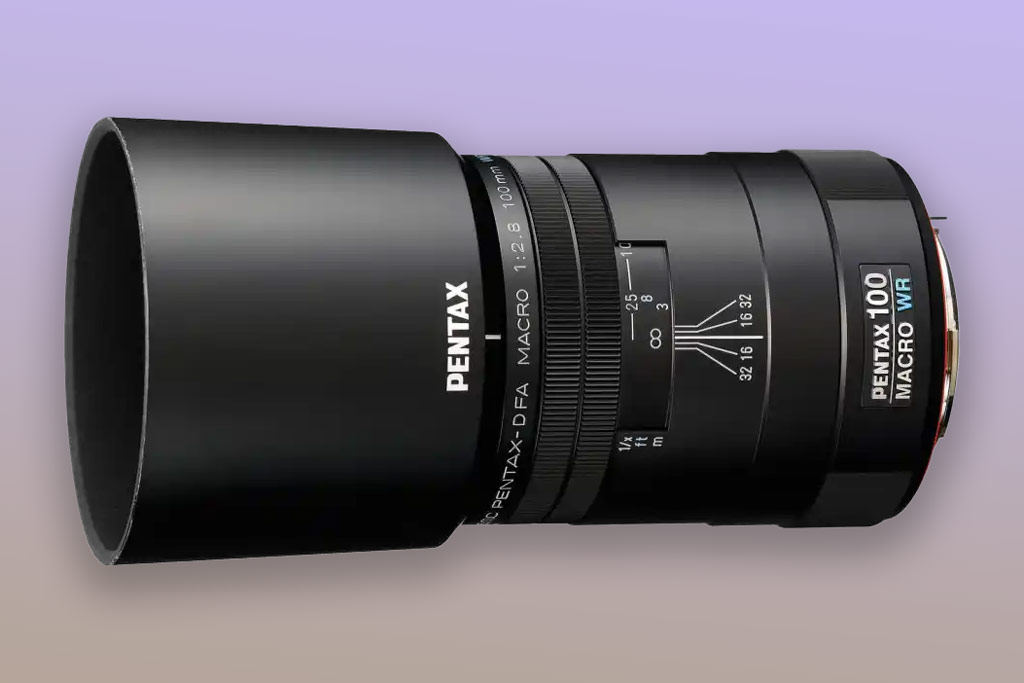
Amateur Photographer verdict
A compact, weather-resistant lens delivering true 1:1 magnification and sharp results. Its Quick Shift focus override is handy, though the extending barrel design may be less ideal for precise macro- Hardy and weather-resistant
- Pleasingly compact
- Useful Quick Shift manual focus override
- Changes length when focusing
| Mount | Pentax K |
| Min. focus distance | 13cm |
| Max. magnification | 1.0x |
This macro lens works on both full-frame and APS-C Pentax DSLRs. While it looks very similar to the firm’s previous model, it gains updated optics with an additional lens element, making 10 in total, arranged in 8 groups. It’s unusually compact for its class, at just 8.1cm long and 340g, thanks to the use of an extending focus mechanism. The working distance between the lens and the subject at 1:1 magnification is 13cm, and a Quick Shift focus system allows autofocus to be overridden manually at any time. It also benefits from all-weather construction for outdoor use.
Zeiss Milvus 100mm f/2 Makro Planar
Amateur Photographer verdict
It’s heavy, expensive, and fully manual—but also a premium macro lens known for its outstanding optical performance, build quality, and creamy bokeh.- Exceptional sharpness and contrast
- Robust, weather-sealed all-metal construction
- Not true macro
- Fully manual focus and aperture
- Beautiful bokeh with wide f/2 aperture
| Mount | Canon EF, Nikon F |
| Min. focus distance | 44cm |
| Max. magnification | 0.5x |
There’s no denying that £1549 is a lot of money to pay for a macro lens that doesn’t even autofocus. But premium optics and build quality always cost extra, and that’s exactly what Zeiss provides. Available in Canon EF and Nikon F mounts, this lens provides 0.5x magnification at its minimum focus distance of 44cm. Its f/2 maximum aperture gathers an extra stop of light and provides greater background blur compared to conventional f/2.8 macro lenses, which makes it an attractive option for shooting portraits, too. The robust metal barrel is sealed for protection against dust and water splashes, and the Nikon version even boasts an aperture ring.
Irix Dragonfly 150mm f/2.8 Macro 1:1
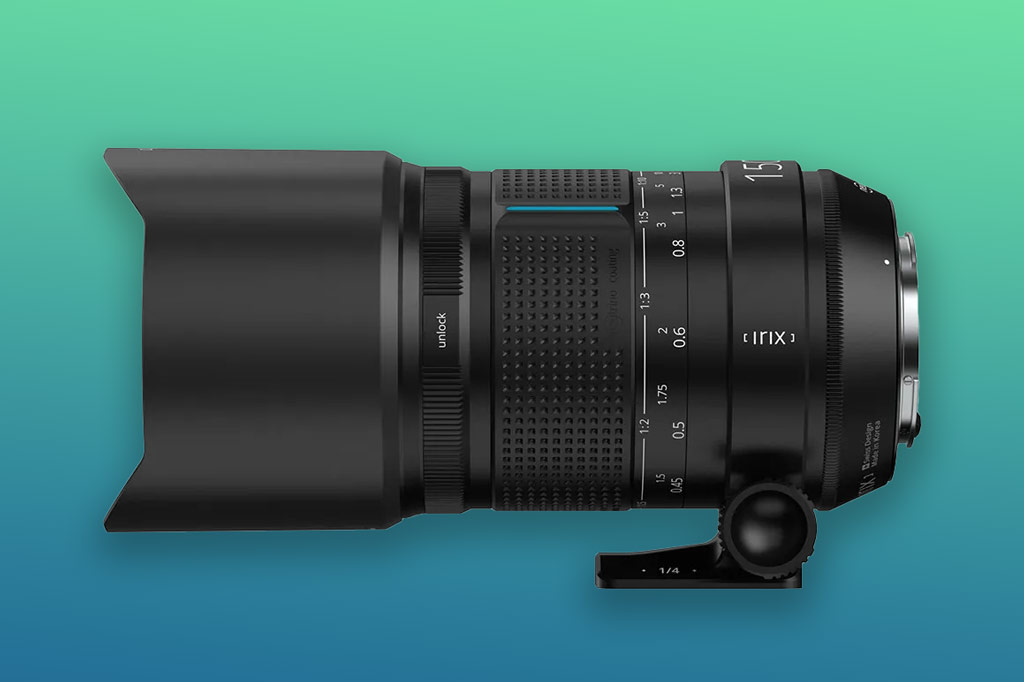
Amateur Photographer verdict
offers impressive optical performance, weather-sealed construction, and an extended working distance ideal for photographing sensitive subjects.- Long focal length enables greater working distance
- Weather-sealed
- Very good optics
- Manual focus only
| Mount | Canon EF, Nikon F, Pentax K |
| Min. focus distance | 34.5cm |
| Max. magnification | 1.0x |
Irix may not be the best-known lens brand, but it has established a reputation for making high-quality optics at very competitive prices. The advantage of this 150mm lens over is in how the longer focal length enables 1:1 magnification from a greater working distance. This means you’re less likely to disturb skittish subjects such as butterflies. In return, you have to live with focusing manually, but this is often standard practice for macro shooting, anyway. The barrel boasts weather-sealed construction and a tripod collar is included in the box, with an Arca Swiss compatible dovetail profile. The lens is available in Canon EF, Nikon F and Pentax K mounts.
Best third-party DSLR macro lens: Sigma 105mm f/2.8 EX DG Macro OS HSM
Amateur Photographer verdict
A reliable macro lens that delivers sharp images with true 1:1 magnification, optical stabilisation, and fast, quiet autofocus. It’s a great option for DSLR users looking for a versatile macro lens- Stellar sharpness
- Internal focusing
- Optical stabilisation
- Limited mount availability
| Mount | Canon EF, Nikon F, Sigma SA |
| Min. focus distance | 31.2cm |
| Max. magnification | 1.0x |
Long one of our favourite lenses, for many years this was our go-to option for testing the resolution of DSLRs, due to its superb sharpness. Available in Canon EF, Nikon F and Sigma SA mounts, it provides a comprehensive feature set at a very tempting price. You get an ultrasonic-type autofocus motor that enables full-time manual override, along with optical stabilisation that’s good for up to four stops of shake reduction. An inner focusing system means that the length doesn’t change on focusing from infinity down to its 31.2cm minimum, at which point the lens provides life-size magnification.
How to choose the best macro lenses
If you’re picking the best macro lens for your camera, there are a few key specs and features to consider when making your choice. Here are the main things to focus on.
Magnification factor: To be considered ‘true’ macro, a lens needs to have a magnification factor of at least 1.0x. What does this mean? It means the lens reproduces an object at life-size or greater on the camera’s sensor. And, when you bear in mind that an image sensor is about the size of a postage size, you start to see how macro lenses render tiny things in such crisp detail.
Focal length: Focal length is something of a different matter when we look at macro lenses. Longer focal lengths are better for getting more of a subject in the frame. However, longer lenses tend to have longer minimum focus distances – and in macro, we want to be as physically close as possible. So it’s necessary to strike a balance. A focal length of around 90-105mm is generally considered to be the sweet spot for macro, though, as we’ll see, there are still great lenses on either side of this range.
Optical performance: This is obviously important with any lens. With macro lenses, however, you want to pay particular attention to how the lens performs at narrow apertures, as you’ll often need to be using these to get a decent amount of depth of field.
Manual focus ring: Manual focusing is generally the name of the game in extreme close-ups. This means you’ll ideally want a lens with a smoothly rotating manual focusing ring.
How we test lenses
We review lenses from the perspective of choosing one for its photography and video performance, so we test every lens for all aspects of image quality: sharpness, contrast, background blur and bokeh, as well as other image qualities that are pertinent to assessing a lens type. We look for optical aberrations such as chromatic aberration and distortion. We test focus performance for both accuracy and speed (in different lighting conditions), as well as how the lens delivers or renders images. This is tested in a range of shooting scenarios designed to expose lens characteristics, but we also examine how it performs in real world use in diverse shooting situations.
Beyond the pure optical performance of the lens, we also assess the lens’ physical qualities, such as its design, how well it is made, how easy it is to handle, and whether it offers any unique or interesting features worth mention. Beyond image quality certain lenses can be assessed for how they make you feel, or how they may affect a camera system set-up for portability, compactness, weight etc.
Other reading: top tips for macro photography, and how to photograph flowers.

